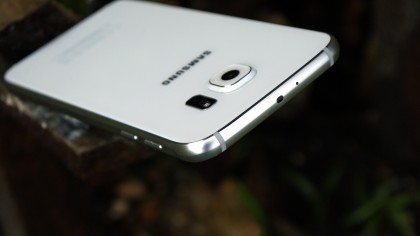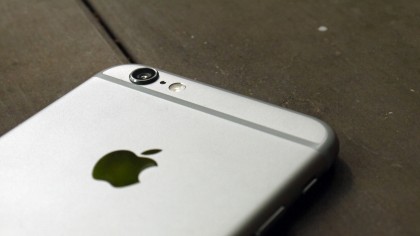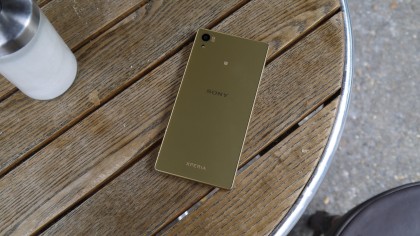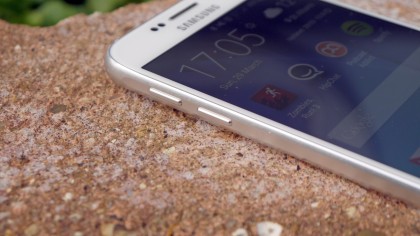Sony Xperia Z5 vs Samsung Galaxy S6 vs iPhone 6
Can Sony's latest rival the best?

The snapper also supports 5x clear zoom with minimal loss of quality and can shoot video in 4K, using an improved version of Sony's SteadyShot technology for blur-free footage.
The front-facing camera meanwhile is a 5MP one with a 25mm wide-angle lens, so you can fit lots in the frame and it has the same SteadyShot technology as the main snapper.

That all sounds impressive, but the Samsung Galaxy S6 has one of the best smartphone cameras we've ever come across. Its 16MP sensor is highly capable in both bright and low light and while you can easily point and shoot there's also a strong selection of manual controls.
Like the Sony Xperia Z5 it supports 4K video and with optical image stabilisation you can be confident that your photos and footage will come out smooth. Round the front it has a 5MP snapper too and just like the Z5 it can take wide-angle shots.

The iPhone 6 has a pretty great camera as well. It's only 8MP but it can take impressive photos, helped in part by 'Focus Pixels', which lead to faster autofocus and improved clarity.
It's a strong snapper, with simple, intuitive controls and it's good for video too, supporting slow-motion footage at up to 240fps, though the front-facing camera is just 1.2MP.
OS and features
Both the Sony Xperia Z5 and the Samsung Galaxy S6 run Android 5.1, but the overlays are different and include a handful of special apps and features. The Xperia Z5 for example supports PS4 Remote Play and High-Res lossless audio, with lower quality tracks upscaled to near High-Res quality.
Sign up for breaking news, reviews, opinion, top tech deals, and more.
The Samsung Galaxy S6 meanwhile has a heartrate monitor and a Smart Manager app, which shows you the security of your phone, battery life, RAM use and storage all in one place.
The iPhone 6 is the odd one out here as it runs a completely different operating system. With iOS 8 on board you get access to Apple's rich app ecosystem at the cost of some of the customisation and freedom you get on Android. Like Samsung Apple has also gone big on health and fitness, equipping the iPhone 6 with an M8 co-processor, tasked purely with keeping track of movement.

Battery
The Sony Xperia Z5 has a 2900mAh battery, which can supposedly last for up to 2 days of use, with a STAMINA mode keeping it going even longer. It also supports Quick Charge 2.0, so you can theoretically get up to 5.5 hours of usage from a 10 minute charge.
The 2550mAh juice pack in the Samsung Galaxy S6 supports fast charging as well, plus it even supports both wireless charging standards, but you're not going to get anywhere near 2 days out of it. You should get a full working day from it, but not much more.

The iPhone 6 has just an 1810mAh battery but it can keep on chugging for a full day of moderate use. That still leaves it well behind what the Xperia Z5 promises though.
Price and availability
The Sony Xperia Z5 will be hitting stores in October and while no pricing has yet been confirmed we'd expect it will have a premium RRP of perhaps around £500/$650/AU$1000.

The Samsung Galaxy S6 has an RRP of £559/$599/AU$999, while the iPhone 6 starts at £539/$649/AU$999, so they're all expensive, but you don't have to wait to buy an S6 or an iPhone 6, as both are available now.
Verdict
The Sony Xperia Z5 doesn't seem like a massive change from the Xperia Z3+, but with a fingerprint scanner and a new camera it could still be a worthy upgrade.
Those features, combined with its powerful innards, supposedly long-lasting battery and water resistant design should make it a capable flagship. We can't say for sure until we've put it through its paces, but on paper the Sony Xperia Z5 looks to be a worthy rival to both the Samsung Galaxy S6 and the iPhone 6S.
James is a freelance phones, tablets and wearables writer and sub-editor at TechRadar. He has a love for everything ‘smart’, from watches to lights, and can often be found arguing with AI assistants or drowning in the latest apps. James also contributes to 3G.co.uk, 4G.co.uk and 5G.co.uk and has written for T3, Digital Camera World, Clarity Media and others, with work on the web, in print and on TV.